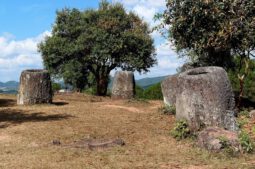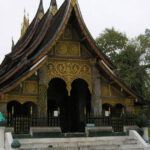The Plain of Jars
The Plain of Jars is a group of fields containing thousands of stone jars cut out from rock thousands of years ago. The sites are located around the city of Phonsavan in Xiangkhouang province, North East Laos. While some of the sites contain just a few jars, others contain hundreds many of which are broken […]

The Plain of Jars is situated on the Xieng Khouang Plateau in northern Laos. One local legend states that the jars were originally constructed to distil an alcoholic brew to celebrate the victorious military campaign of an ancient king; however archaeological evidence suggests that the jars are funerary urns, carved by a Bronze Age people around 2,000 years ago. More recently, due to its strategic location, the Plain of Jars played a pivotal role in the second Indochina War and was the site of many ground battles and intense aerial bombardment. Xieng Khouang is now a peaceful place with wonderful cool weather, vast grassland, many ethnic groups, hot springs and caves.
It is an estimation of 1.969 jars scattered in 52 places in Xieng Khouang, the biggest one is 3m in height, the heaviest is 114 ton in weight, the others are 1 – 2m in height.
In 1998 UNESCO and the Government of Lao People’s Democratic Republic (Lao PDR) initiated a multi-year project to safeguard the archaeological resources of the Plain of Jars. The UNESCO-LAO Project to Safeguard the Plain of Jars is intended to remove the danger of unexploded ordnance, help to rehabilitate the plateau’s agricultural land and identify priority areas for protection for archaeological research and tourism development.
Thong Hai Hin is one of the largest sites with over 300 jars, it is also known as Site 1 is located about 15 kilometers South West of Phonsavan. The large area surrounded by a fence is adjacent to a Laos army military base.
A path from the entrance gate leads to the top of a small hill where the first group of jars is found. From the hill a path leads to a second group of jars a few hundred meters away. The only jar containing a stone lid was found here. Thong Hai Hin is the only site where a decorated jar was found, bearing a sculpted human figure carved into the stone. A cave at this site was probably used as a crematorium; human remains were found here in the 1930’s.
Opening hours are daily from 9 a.m until 5 p.m. Entrance fee is 10,000 Kip (US$ 1.30) per person to each site.




